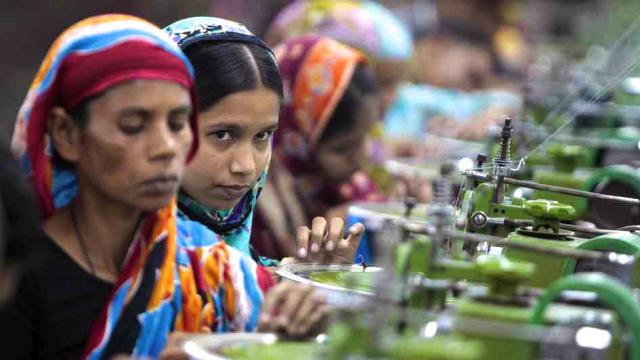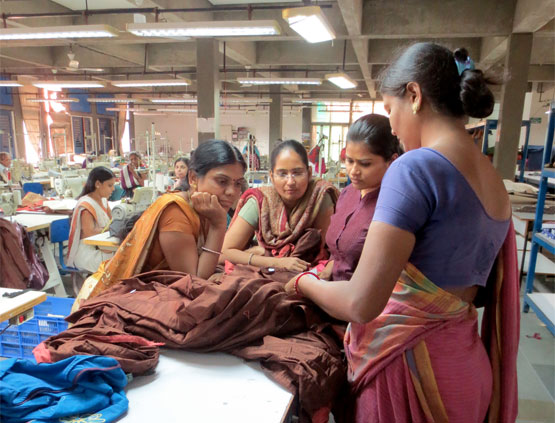
Last year, 150 workers threatened to commit suicide to protest working conditions at Foxconn, Apple’s primary Chinese product-assembly contractor. Since some workers had already jumped to their deaths from the roofs of the factories, Foxconn installed suicide prevention nets. As the media extensively covered this news, two other stories were also prominent: consumers were lining up outside Apple stores, including in Beijing and Shanghai, eagerly awaiting the release of the latest iPhone, and Apple’s stock reached record heights. In other words, investors predicted that worker suicides would not discourage customers from buying Apple products. The investors were correct.
The extensive coverage did, however, spark a conversation in the business world about working conditions throughout a company’s supply chain, and how a business can access that potentially damaging information before it hits the press. In the wake of the Foxconn suicides and the twin tragedies in Bangladesh of the Tazreen Fashions garment-factory fire and the Rana Plaza collapse, more companies are considering the rights and safety of workers in their supply chains. And some new companies are looking at getting information about working conditions from the best source—directly from the workers.
The Difficulty with Monitoring
The average Fortune 1000 company has 20,000 to 40,000 subcontractors that span the globe. Impotent regulation, weak law enforcement, and limited investment in monitoring and verification of working conditions make it difficult even for well-intentioned companies to make sure their products are produced without exploitation.
The globalization of production means that raw materials travel great distances and are handled by many middlemen as they are transformed into the finished product bought by a consumer. Each step in the process may be suspect: The U.S. Department of Labor, for example, identifies 134 goods from 74 countries believed to be made with child or forced labor. Countless other health and safety issues are not monitored. The supply chains are complex, and there’s no single organization monitoring the way the things we buy are produced. So how do we ensure that we are not buying exploitation-laden products? Can it even be done?
Generally, a company is not liable for the practices of a sub-contractor. Many companies do try to establish some ethical sourcing practices, but information is hard to come by and there’s no central source for such data.
Eileen Fisher, Inc., sells women’s clothes and accessories and generates more than $300 million in annual revenue. It has a profit-sharing arrangement with its U.S. workers, and has a strong commitment to progressive human rights practices.
Still, according to Amy Hall, director of social consciousness, the brand’s corporate responsibility arm, when a nonprofit wrote to them asking if Uzbek cotton was used in their clothing, she had to admit they didn’t know for sure. In Uzbekistan, children are routinely forced by the government to leave school during the harvest and pick cotton—cotton that ends up in garments sold all over the world.
“Every single fiber we use, there are questions about it,” Hall said. “How is it sourced, how is it processed? Can it be done better...?” The questions, she said, have led them to where they are today: wanting to deeply and thoroughly map their supply chain to provide a more complete picture of where things come from and the conditions and needs of workers all along the way.
For years, companies trying to assess their supply chains for human rights abuses have relied on third-party audits to monitor factories. Typically, trained monitors conduct physical inspections and interview workers at the jobsite, where management can sit in. It’s easy enough for managers to unlock doors or correct other safety deficiencies while outsiders are present for short visits.
Hearing Directly From Workers
But a recent trend in verification that is gaining some traction is getting data from workers themselves. Since a supply chain can have many links, some companies are investing in projects that find ways to ask workers on the factory floor about the conditions they experience—every day.
For example, LaborVoices, Inc., a social enterprise, uses mobile phones to collect data directly from workers who can anonymously report working conditions in their own language to a recording service. Recordings inform workers what their rights are—from health care to unions. LaborVoices then compiles the data and provides it to businesses seeking independent verification of contractor labor practices. Companies with subscriptions can monitor information coming from workers at specific factories via an online dashboard.
Kohl Gill, LaborVoices’ founder and CEO, a 2013 Echoing Green Fellow, believes that business thinking is shifting: “Companies are realizing that workers are good sources of information not just about working conditions but also about other facility-related factors that could cause disruptions in production.” More than 1,000 Bangladeshi workers were killed this year in the collapse of the Rana Plaza building, where garments for Western brands were sewn. After that disaster the world’s largest retailer, Wal-Mart, which activists have pushed for years to clean up its supply chains, tapped LaborVoices to help monitor working conditions there.
Eileen Fisher uses a similar tool from Good World Solutions, an Oakland-based nonprofit that helps corporate clients design and launch mobile worker surveys and analyze data collected from the front lines.
Unlike traditional auditing where inspectors visit a facility once a year, usually at a predetermined time, Eileen Fisher’s program allows them to hear from workers in a supplier’s facility at any time. The company also commissions home-based surveys to glean additional insights from workers. Hall says surveying “allows us to understand the real life situations of individual workers in our factories.”
Last year, survey results from a community near Kolkata revealed that home workers weaving for Eileen Fisher suppliers lived below the poverty line. Hall says the company is now working with an Indian NGO to determine the best way to raise the weavers’ income: “Possible solutions include conducting time and motion studies to establish a fair wage rate and/or offering quality enhancement training for weavers to reduce rejected goods.”
At the same time, Hall also points out that the “complexity of the weaving structure,” which puts many layers of vendors between Eileen Fisher and the weavers, means they don’t have as much control over working conditions as they’d like.
The Internet and wireless communications provide an amazing ability to collect and analyze data. This creates an unprecedented opportunity to manage complex global supply chains for human rights risks and promote a culture of worker-informed verification that can be built in to all sourcing practices.
The social opportunity lies in ensuring that such effective models become scalable, enabling procurement managers to make conscientious decisions about who to buy their supplies from.
3 WAYS TO SHOW YOUR SUPPORT
- Log in to post comments

















